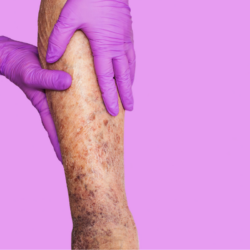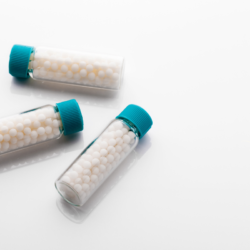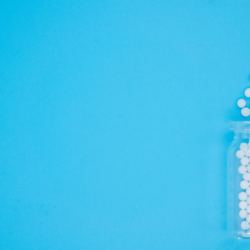Frostbite is an erythematous lesion on the fingertips that occurs when the skin is cold. They may be simple or lead to complications in the form of trophic disorders (ulcerations, nail damage). Caused by progressive and repeated vasoconstriction of the arterioles, these lesions are notably associated with vasodilation with stasis in the venules. They occur more frequently in women with sympathetic and endocrine imbalance. The terrain is similar to that of acrocyanosis.
In this article, we will describe symptomatic treatments for simple frostbite and ulcerated frostbite, followed by treatments for specific conditions.
What is frostbite?
Frostbite is a painful skin condition that occurs when the skin is exposed to very cold temperatures over a long period of time. It takes the form of red, swollen lesions on the skin, which can be painful, itchy and sometimes even oozing. They generally occur on the extremities of the body, such as the fingers, toes, nose and ears.
Causes of frostbite
Frostbite is caused by prolonged exposure to very cold temperatures. Frostbite can also be caused by reduced blood circulation in the affected areas. People with circulatory disorders, diabetes or autoimmune diseases are more likely to develop frostbite.
What are the conventional treatments?
Conventional treatments for frostbite include gradually warming the skin, using anti-inflammatory medication and preventing frostbite by avoiding prolonged exposure to the cold. Frostbite patients are also encouraged to stay warm and avoid scratching or rubbing the lesions, as this can worsen the condition.
What are the benefits of homeopathy?
Homeopathy offers a number of advantages for the treatment of frostbite. Firstly, it offers a natural approach, with no undesirable side effects. What’s more, it allows treatment to be tailored to the specific symptoms of each patient. Finally, homeopathy is a gentle, non-invasive method that can be used to complement other treatments.
Symptomatic medication for frostbite
Symptomatic medication is used to relieve the symptoms of frostbite, such as pain and inflammation. Although these drugs do not treat frostbite directly, they can help to improve patient comfort during the healing process. Symptomatic medicines can be used in combination with homeopathic treatments for complete relief of frostbite symptoms.
Simple frostbite:
-
Agaricus:
This medicine is used for very painful frostbite with stinging and burning pain the affected areas are itchy. There is paresthesia.
-
Apis :
Frostbite begins with a pinkish-red oedema, with stinging, burning pain, aggravated by warming which leads to pruritus, improved by cold applications.
-
Arsenicum album :
The skin lesion is burning and very painful. These pains worsen at night, between 1 and 3 in the morning; they are of great concern to the patient. They improve with warm applications.
-
Carbo vegetabilis :
This medicine is suitable for frostbite associated with significant cyanosis of the extremities. They may ulcerate in a torpid fashion, causing burning pain while the integuments show an icy coldness.
Dosage: These four medicines should be taken in doses of 5 granules of 7, 9 or 15CH, 2 to 4 times a day in the acute period.
-
Hamamelis :
It is indicated according to its venous tropism, at a rate of 20 drops in 6DH, 2 times a day during the cold season.
Indicated in painful chilblains of the fingers, with intense, burning pruritus, aggravated by cold and touch, especially if vesicular lesions containing a hematic liquid are found.
Dosage: Take 5 granules 2 times a day, in 7 or 9CH.
-
Secale cornutum :
Can be taken systematically in 5CH, 5 granules 2 times a day, due to its action on arterial and arteriolar spasm. Burning pain improves with cooling.
Ulcerated chilblains :
Ulcerations have regular, “fingernail-like” edges and bleed at the slightest touch; if there is a discharge, it is excoriating. Stinging pain, such as thorns or splinters, improves with warm applications.
-
Petroleum :
This medicine is indicated when the patient has cracks and dirty-looking cracks at the ends of the fingers, with winter recrudescence.
Dosage: Take these 2 medicines in 7 or 9CH, 5 granules 2 times a day.
Locally:
For simple chilblains, applyAgaricus 4% TM ointment. For ulcerated chilblains, potassium permanganate baths and Calendula ointment or Cicaderma ointment can be used as antiseptics, either applied in a thin layer.
Home remedies for frostbite
Field remedies for frostbite are homeopathic remedies used to treat frostbite holistically, taking into account the patient’s individual symptoms as well as their constitution and general state of health. These homeopathic remedies can help to improve blood circulation, reduce inflammation and stimulate the body’s natural healing process. Field remedies can be used alone or in combination with symptomatic medicines for a complete and effective treatment of frostbite.
Pulsatilla:
The patient presents with erythrocyanosis of the extremities, aggravated by heat and rest, and improved by walking in the open air. Frostbite is a frequent complication of this condition.
Dosage: Take 5 granules in 9 or 15CH, once a day to once a week.
Silicea:
Suitable for cold suffer ers who suppurate easily, who have icy extremities with cyanosis or pallor, frostbite and sharp splinter pains when cold. They sweat easily from their feet.
Dosage: Take 5 granules in 9 or 15CH, once a day to once a week.
Psorinum:
This medicine is suitable for periodic annual attacks and conditions caused or aggravated by the cold. It is therefore perfectly indicated for these patients, who are particularly handicapped in winter.
Dosage: Take in 9 or 15CH doses once a week.
How can frostbite be prevented?
To prevent frostbite, it is essential to put in place a few good practices. First of all, it’s important to cover up properly by wearing warm clothing suited to the weather. Layering several layers is an effective technique for conserving body heat, and it’s best to choose insulating materials. The best way to protect yourself from the cold !
Next, don’t neglect to protect your extremities, such as your fingers, toes, nose and ears, which are particularly sensitive to the cold. Wearing gloves, thick socks, a hat and a scarf is therefore highly recommended. It’s also crucial to keep your feet dry, as dampness increases the risk of frostbite. So opt for waterproof footwear and socks made of breathable material, and change them as soon as they get wet.
Finally, it’s best to limit exposure to the cold, especially when the wind is strong. Try to spend less time outdoors during periods of extreme cold and, if possible, take shelter from the wind when travelling.





